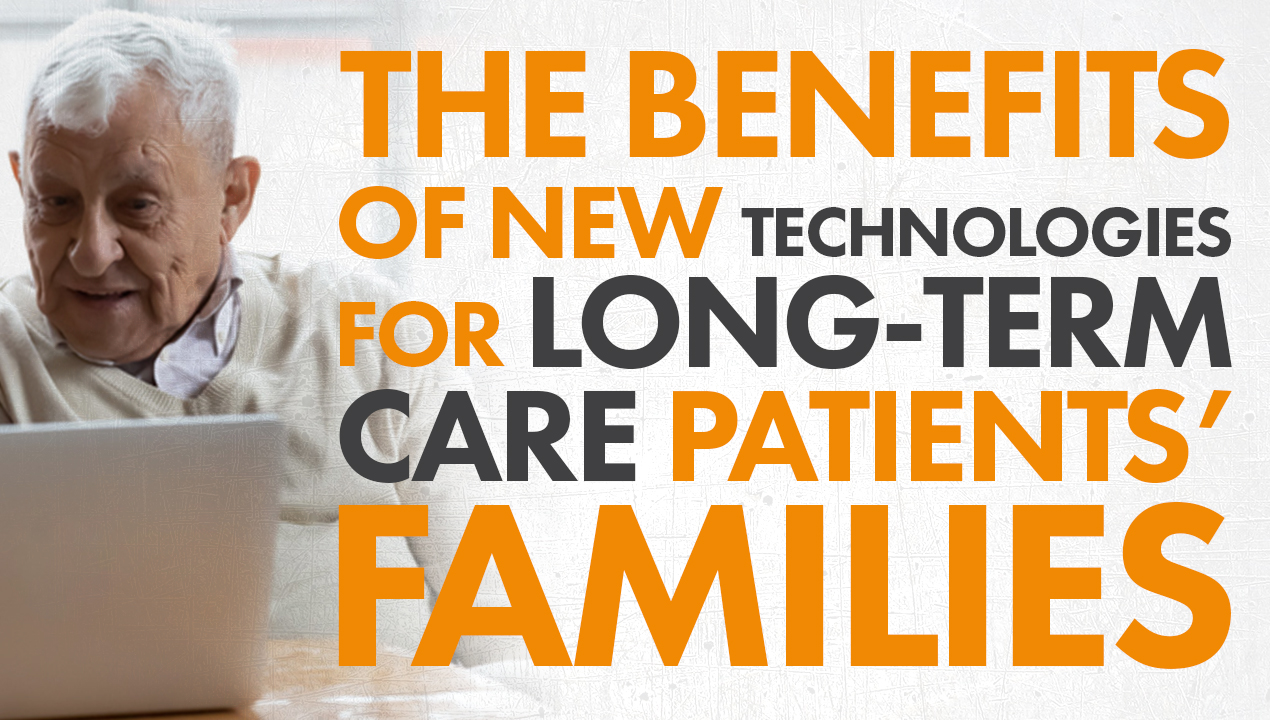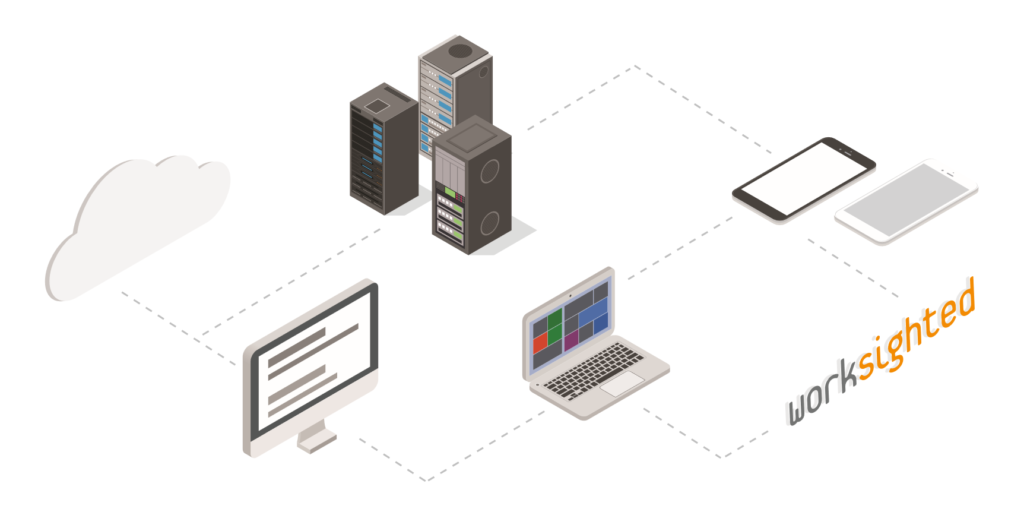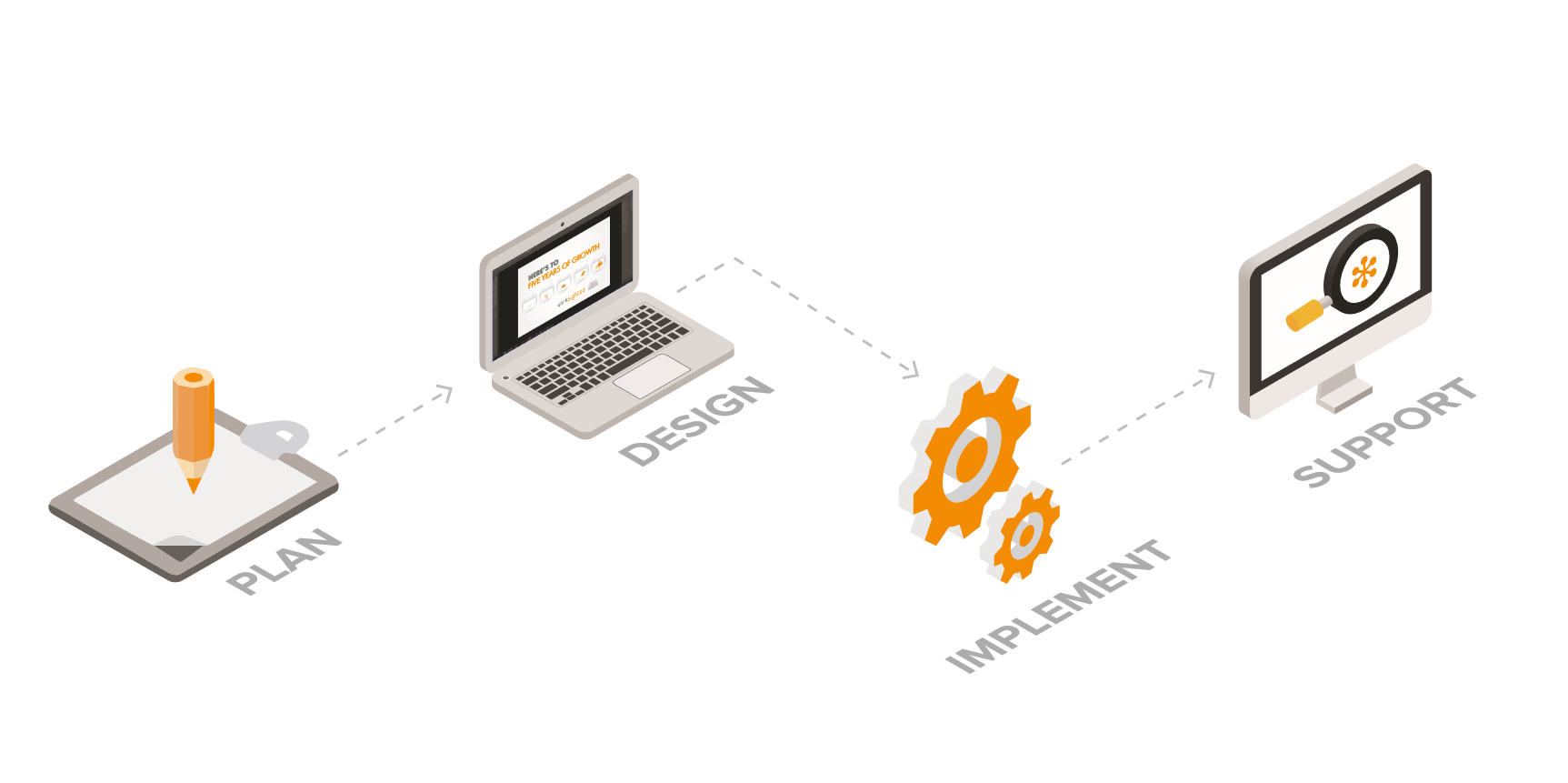The Benefits of New Technologies for Long-Term Care Patients’ Families
Welcome to the final installment of our three-part series exploring how digital transformation in long-term care (LTC) delivers better experiences to benefit everyone. In this article, we’ll examine the benefits of new technologies for long-term care patients’ families.
When we talk about long-term care, the focus is often primarily on patients or care professionals. However, there’s another equally important demographic that may not always receive the same attention: patients’ families and friends.
How can technology help them stay close to their loved ones who are in long-term care facilities? How can it make them feel more connected to them and up-to-date on the care they receive? We’ll reveal the answers here.

Keeping people connected in challenging times
During the COVID-19 pandemic, digital communication has been one of long-term care’s big heroes. Many patients are in the most at-risk groups, so it was necessary to limit their contact with others to minimize the risk of virus transmission. Care homes all around the world banned visits entirely.
Although phone calls may go some way toward bridging the gaps, there’s no substitute for seeing a person’s face. Video calls allowed friends and relatives to stay in contact with patients. They could see each other smile, recognize the frowns, and comfort one another “face to face” during an incredibly difficult period.
Video calls became an absolutely vital tool for social connection. And, now that the technology has demonstrated its worth and is in more widespread use, it’s likely to be here to stay.
Shortening the distances between loved ones
Long beyond the COVID-19 pandemic, when people are freer to meet face to face in the traditional sense, video communication technology will still have a valuable role. Not as a replacement for physically visiting patients, but as a way to help families see them even more.
Many families wish they could visit relatives in long-term care more often, but life gets in the way. Long traveling distances or work/childcare commitments limit the number of physical visits that they can make. Now, loved ones can make virtual visits in between the physical ones, and spend time together more meaningfully than they would during a phone call.
It’s a manifestation of “telehealth” that perhaps isn’t considered often enough. This kind of closer, more regular contact can be greatly beneficial to patients and families alike – and it’s all powered by today’s easy-to-use, high-performance technology.
More visibility and peace of mind
Let’s look at another of the benefits of new technologies for long-term care patients’ families. We’ve examined how communication tools provide visibility in a literal sense but deploying emerging technologies in long-term care can also help relatives gain visibility into patients’ wellbeing.
The Internet of Things (IoT) has a role to play here, in the form of wearable devices. These devices constantly but non-invasively monitor patients, collecting data that care workers can review via simple mobile apps. This means care workers – and, in turn, families – have the very latest data regarding patients’ status.
The peace-of-mind benefits here can be huge. Families know that the wearable devices are keeping a safe eye on their loved ones, at times when care workers may not be able to.
Sharing everyday moments
Mobile apps can also help families feel more included in patients’ lives. Using apps such as Myo, caregivers, and patients can send photos and post updates to the patient’s network of family and friends.
Caregivers and patients can now easily and instantly share everyday moments, spontaneously capturing them as they happen. Patients’ entire families can see them, wherever they are – so, for instance, now everyone can see that grandma enjoyed bingo night or a sunny day in the garden.
It’s a two-way street – relatives can respond and leave comments for patients to see. And, as this technology grows, across new apps that are developed, sharing could become more mutual. Family members may one day be able to send their own photos, videos, and voice messages back to patients – helping them feel more involved in their family’s lives.
Future benefits of new technologies for long-term care patients’ families
We hope this article has been thought-provoking. The benefits of new technologies for long-term care patients’ families seem set to grow and grow in the future – and we’re excited to see what’s next.
At Worksighted, we’re dedicated to helping our customers make the most of the latest innovations and emerging technologies in long-term care. Our services include strategy, support, and everything organizations need to start transforming their business and enhancing the care they offer. We would be happy to explore the possibilities with you. If you’d like to discuss how Worksighted can help you make the most of new technology in long-term care, get in touch with us today.





